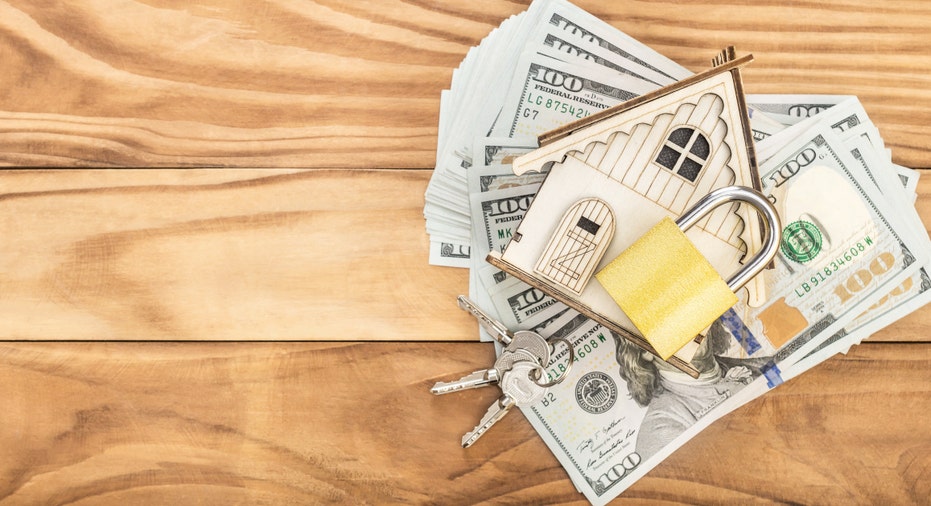How much money do you really need to buy a house?

Here’s precisely how much money you need to purchase a home in today’s market. (iStock)
Although coronavirus cases are rising in many parts of the country, the pandemic has done little to stifle the U.S. housing market. On the contrary: home buying is heating up nationwide.
Existing home sales jumped 20.7% in June at an annual rate of 4.72 million, according to the National Association of Realtors. Meanwhile, new home sales surged 13.8 percent in June to a seasonally adjusted annual rate of 776,000 units, the U.S. Department of Housing and Urban Development reported, pushing the sales rate of new homes to its highest level in 13 years.
Record-low mortgage rates are fueling demand from home buyers. The average rate of a 30-year fixed mortgage fell below 3% for the first time in history this summer, according to Freddie Mac, one of the largest buyers of home mortgages in the U.S. Experts say mortgage rates may drop even lower if real estate demand from buyers and refinancers remains high in the months ahead.
Given these low loan rates, for many prospective buyers, the time to purchase is right — and you have plenty of mortgage options to consider amid your house hunting. Still, the home-buying process poses a number of questions, including how much cash is needed to buy a house.
If you’re looking to purchase a home in today’s market, you can explore your mortgage options by visiting Credible to compare rates and lenders and get a mortgage preapproval letter in minutes.
What is the average cost of buying a house?
How much does it cost to buy a home? Your down payment depends on the type of home loan you get.
If you’re applying for a conventional loan, you’ll need to make a 20% down payment in order to avoid paying private mortgage insurance, or PMI — a premium that can range from 0.55% to 2.25% of your original loan amount each year. (Lenders charge PMI because buyers who invest less than 20 percent in a property are historically more likely to default on their mortgage.)
However, plenty of buyers obtain conventional loans without plunking down 20 percent. In fact, more than half of home buyers (56%) in the U.S. last year said they put down less than 20 percent on their mortgage, Zillow’s 2019 Consumer Housing Trends Report found. And, according to a study by Lodestar Software Solutions of more than 600,000 loan cost estimates from across the country, the median down payment in the U.S. in 2018 was $15,490, which was just 5.37% of the median home price of $270,000.
To get a better picture of your home loan options, visit Credible, where you can get a full view of what type of terms and conditions mortgage lenders are currently offering.
HOW TO GET PRE-APPROVED FOR A MORTGAGE
Another way to put less than 20% down on a house is to get a Federal Housing Administration (FHA) loan. These government loans, aimed at low- and moderate-income households, allow borrowers to qualify for a mortgage with a down payment as low as 3.5% and a minimum credit score of 580 — though borrowers with a credit score of 500 to 579 can qualify by making a 10% down payment. The caveat: FHA loan borrowers must pay a mortgage insurance premium (MIP) of 1.75% upfront at closing, as well as an ongoing monthly fee of 0.85%.
If you’re active or retired military—or the surviving spouse of a veteran—you may be eligible for a loan from the U.S. Department of Veteran Affairs. VA loans offer low-interest rates and don’t charge PMI, but they require a funding fee of 2.3% of your loan amount that you can either pay upfront or roll into your monthly mortgage payments.
WHAT IS PRIVATE MORTGAGE INSURANCE AND HOW DOES IT WORK?
Live in a small town? The U.S. Department of Agriculture Rural Development offers USDA loans to people in towns with populations of 10,000 or less that allow borrowers to qualify with down payments as low as 0%.
If you have a medical degree, you may qualify for a low-interest physician loan — also called a “doctor loan.” Physician loans allow buyers to put as little as 0% down on a house.
What are average closing costs on a home?
In addition to making a down payment, you’ll have to pay closing fees to third parties, such as title companies, underwriters or real estate attorneys, that helped facilitate your home purchase. These fees cover the home appraisal, loan underwriting, and other settlement expenses.
Generally, closing costs run 2% to 5% of the purchase price of a home. So, for a $300,000 house, you’d pay about $6,000 to $15,000 in closing fees.
Your lender may also require you to deposit funds into an escrow account so that the company can pay upcoming property taxes on your behalf.
Use Credible's free online tools to learn more about mortgages — including what rates you currently qualify for and what your estimated monthly payments will be.
WHAT ARE THE CLOSING COSTS FOR SELLING A HOME?
What are today’s mortgage rates?
According to Freddie Mac's Primary Mortgage Market Survey (PMMS), the 30-year fixed-rate mortgage averaged 2,88 percent on August 6, down 0.11% the week before. Meanwhile, the average rate of a 15-year fixed mortgage was also down 2.44% from 2.51% the previous week, and the 5-year adjustable-rate mortgage (ARM) average rate dropped slightly from 2.94% to 2.9%.
Mortgage rates are still at historic lows — meaning now is a great time to explore your home loan options, which you can do in minutes by visiting Credible to compare rates and lenders. Start shopping around today to nab a low-rate mortgage.



















